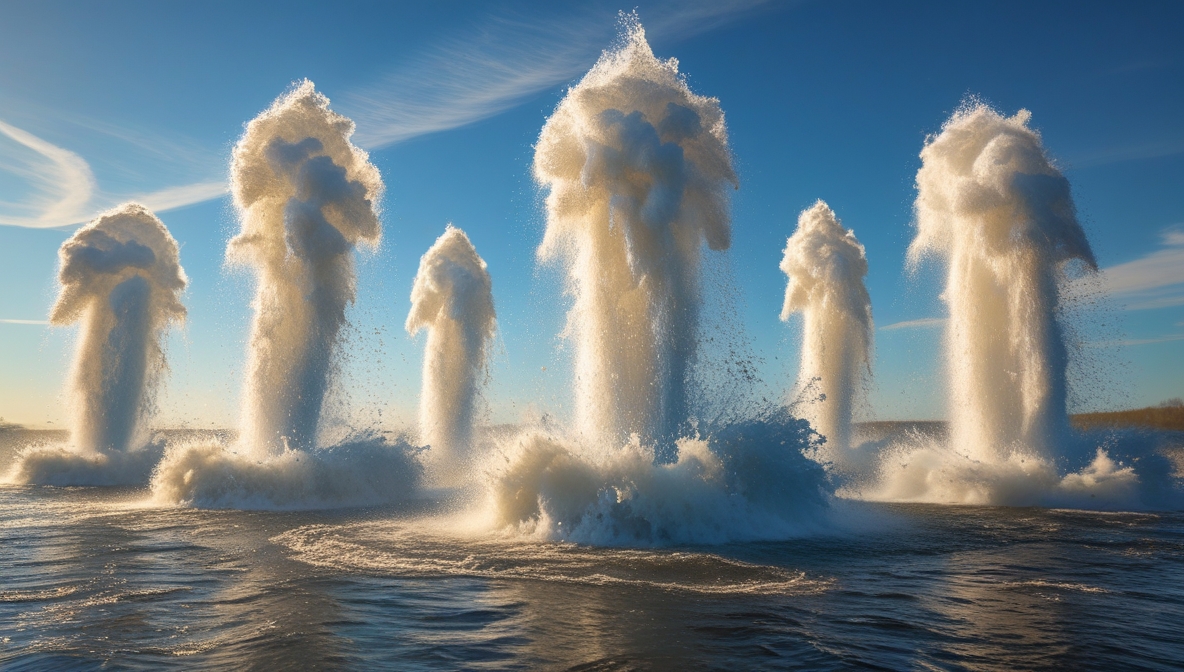Overview
Tucked away on the southwest coast of Tongatapu—the main island of Tonga—lies one of the South Pacific’s most awe-inspiring natural wonders: the Mapu a Vaea (Blowholes), meaning “Whistle of the Noble.” Stretching across more than 5 kilometers of rugged volcanic coastline near the peaceful village of Houma, this natural spectacle draws in both locals and visitors alike. As powerful waves from the Pacific crash into the rock-studded shore, water shoots dramatically through vertical blowholes—some reaching heights of 30 meters or more—creating a rhythmic, thunderous sound reminiscent of a giant’s whistle.
Mapu a Vaea isn’t just a visual treat; it’s a visceral experience of nature’s raw power. The combination of wind, sea, volcanic rock, and tides makes each visit slightly different but always memorable.


Quick Facts
Location: Houma, Tongatapu, Tonga
Height of Plumes: Up to 30 meters (approx. 100 feet)
Best Time to Visit: High tide during the dry season (May–October)
Entry Fee: Free
Accessibility: Easily reachable by car, taxi, or local bus from Nukuʻalofa
Budget Breakdown (TOP & USD)
| Expense Category | Cost (TOP) | Cost (USD) |
|---|---|---|
| Local Bus Fare | T$3 | $1.30 |
| Taxi from Nukuʻalofa | T$30–T$40 | $13–$17 |
| Guided Tour (Optional) | T$50 | $21 |
| Snacks & Water | T$10 | $4.30 |
| Souvenirs | T$20 | $8.60 |
| Total Estimate | T$113 | $48.20 |
Getting There
By Car: A straightforward 30-minute drive from Nukuʻalofa to Houma takes you along scenic coastal roads. Clear signage leads to a parking area near the blowholes.
By Bus: Regular buses to Houma depart from central Nukuʻalofa. Just inform the driver that your stop is Mapu a Vaea.
By Taxi: Taxis are readily available and cost between T$30–T$40, depending on negotiation.
Safety Tips
Stay behind barriers or on designated viewing platforms—rocks can be slippery and unpredictable.
Avoid visiting during stormy weather or exceptionally high surf for safety reasons.
Wear sturdy footwear for navigating volcanic rocks, and don’t forget your hat and sunscreen.
Keep cameras and electronics safe from surprise sprays of salty water!
Climate
Tonga boasts a tropical climate, with the following seasonal breakdown:
Dry Season (May to October): Mild and pleasant temperatures (21°C–26°C), perfect for sightseeing and outdoor adventures.
Wet Season (November to April): Hotter (25°C–30°C) with frequent rainfall and higher humidity.
For the best views and comfort, plan your visit during the dry season and aim for high tide times when the blowholes are most dramatic.
Best Things to Do in Mapu a Vaea (Blowholes)
Watch the Blowholes in Action
Nothing beats standing near the edge and watching the blowholes shoot seawater skyward in thunderous bursts. The sound, spray, and sheer energy are unforgettable—especially during high tide.
Photography
Capture epic shots of natural water fountains with the Pacific Ocean as a backdrop. The contrast between white spray and deep blue waves offers dramatic photo opportunities, especially during golden hour.
Picnicking
Bring along a mat and enjoy a casual picnic by the sea. There are grassy areas nearby where locals often gather for weekend lunches with unbeatable views.
Visit Nearby Villages
Take a short walk into Houma village, where you can engage with friendly locals and explore the laid-back village atmosphere. You may even find handicrafts or small food stalls.
Sunset Viewing
Few places in Tonga offer a more powerful sunset scene than Mapu a Vaea. Watch as the sky glows orange and pink, and the water plumes become silhouettes against the fading light.
Mapu a Vaea (Blowholes)Travel Guide
Accommodation
Though Houma is a small village, most travelers stay in Nukuʻalofa, which offers a mix of:
Budget Guesthouses
Beachfront Bungalows
Mid-Range Hotels
Dining
You’ll find small eateries near Houma serving Tongan specialties like:
‘Ota ‘ika (raw fish salad)
Lu Pulu (corned beef wrapped in taro leaves)
Fresh tropical fruit juices
In Nukuʻalofa, enjoy a more varied selection including seafood grills, international fare, and casual cafes.
Transportation
You can rent a car from Nukuʻalofa for full island flexibility. Local buses and taxis are available, but plan ahead for return trips—especially after dark.
Language
The official language is Tongan, but English is widely spoken—especially in tourist areas, making communication smooth for most visitors.
Top Attractions Near Mapu a Vaea (Blowholes)
1. Houma Village
Stroll through this peaceful village to get a feel for traditional Tongan life. Friendly smiles, lush greenery, and the echo of church songs offer a glimpse into the local rhythm.
2. Haʻatafu Beach
Just a short drive away, this serene beach is known for its surf breaks and sunsets. It’s less touristy and ideal for relaxation.
3. Three-Headed Coconut Tree
A quirky natural oddity in Tongatapu that sparks curiosity. A great stop on the way to or from the blowholes.
Places to Visit in Mapu a Vaea (Blowholes)
Mapu a Vaea (Blowholes) Viewing Site
The main draw! Marvel at the natural “fountains” created by crashing waves. Visit at high tide for the most impressive water displays.
Coastal Cliff Walk
A rugged path along the coastline offers panoramic views of the ocean, ideal for walks and quiet reflection.
Mapu a Vaea (Blowholes)Sunset Point
A local favorite for winding down the day with an unforgettable sunset view over the Pacific.

